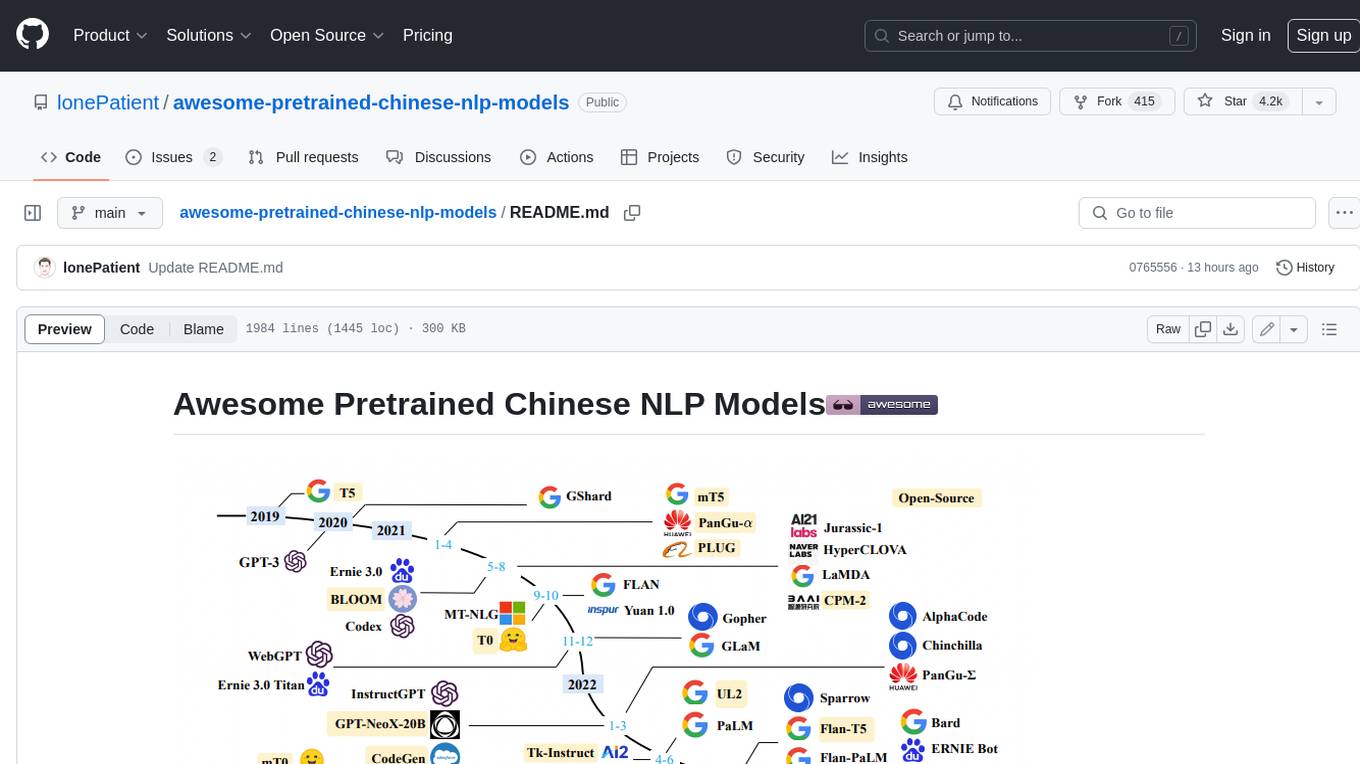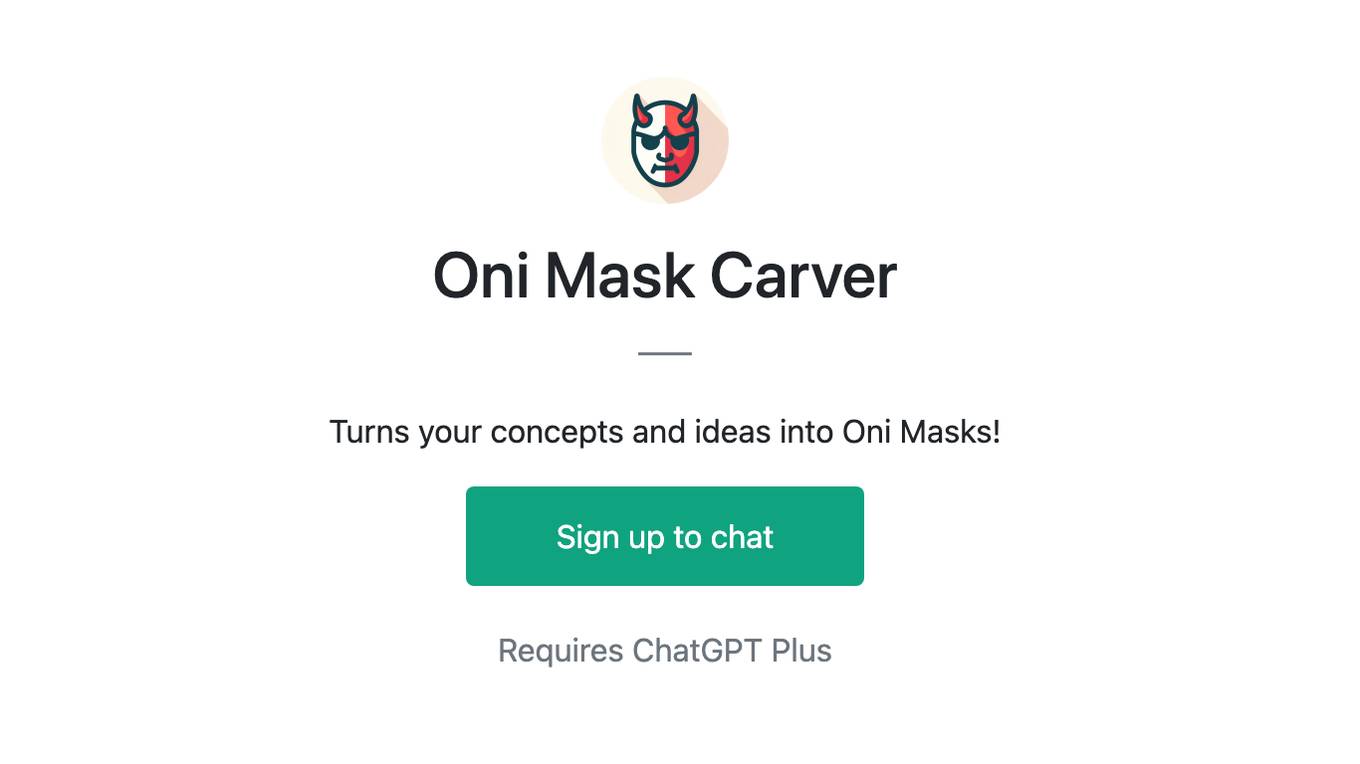Best AI tools for< Mask Sensitive Data >
10 - AI tool Sites
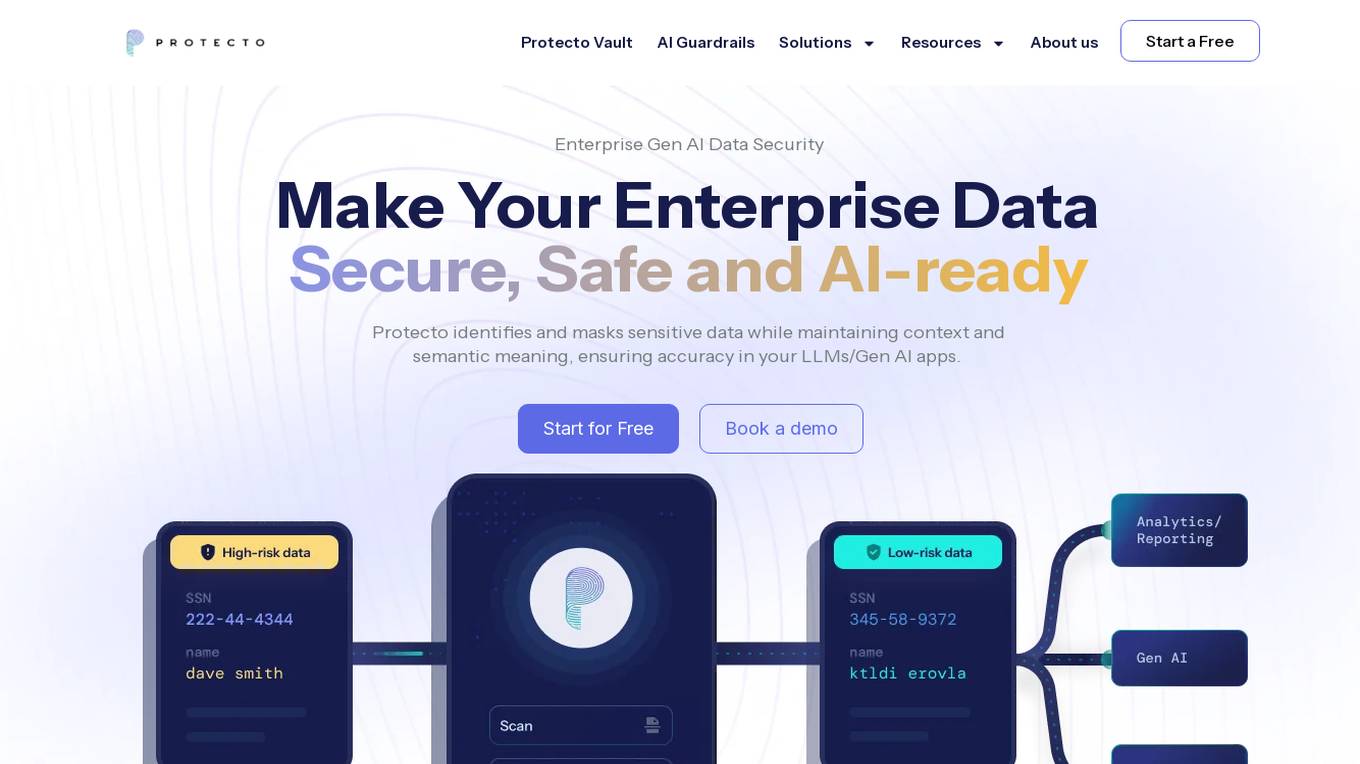
Protecto
Protecto is an Enterprise AI Data Security & Privacy Guardrails application that offers solutions for protecting sensitive data in AI applications. It helps organizations maintain data security and compliance with regulations like HIPAA, GDPR, and PCI. Protecto identifies and masks sensitive data while retaining context and semantic meaning, ensuring accuracy in AI applications. The application provides custom scans, unmasking controls, and versatile data protection across structured, semi-structured, and unstructured text. It is preferred by leading Gen AI companies for its robust and cost-effective data security solutions.
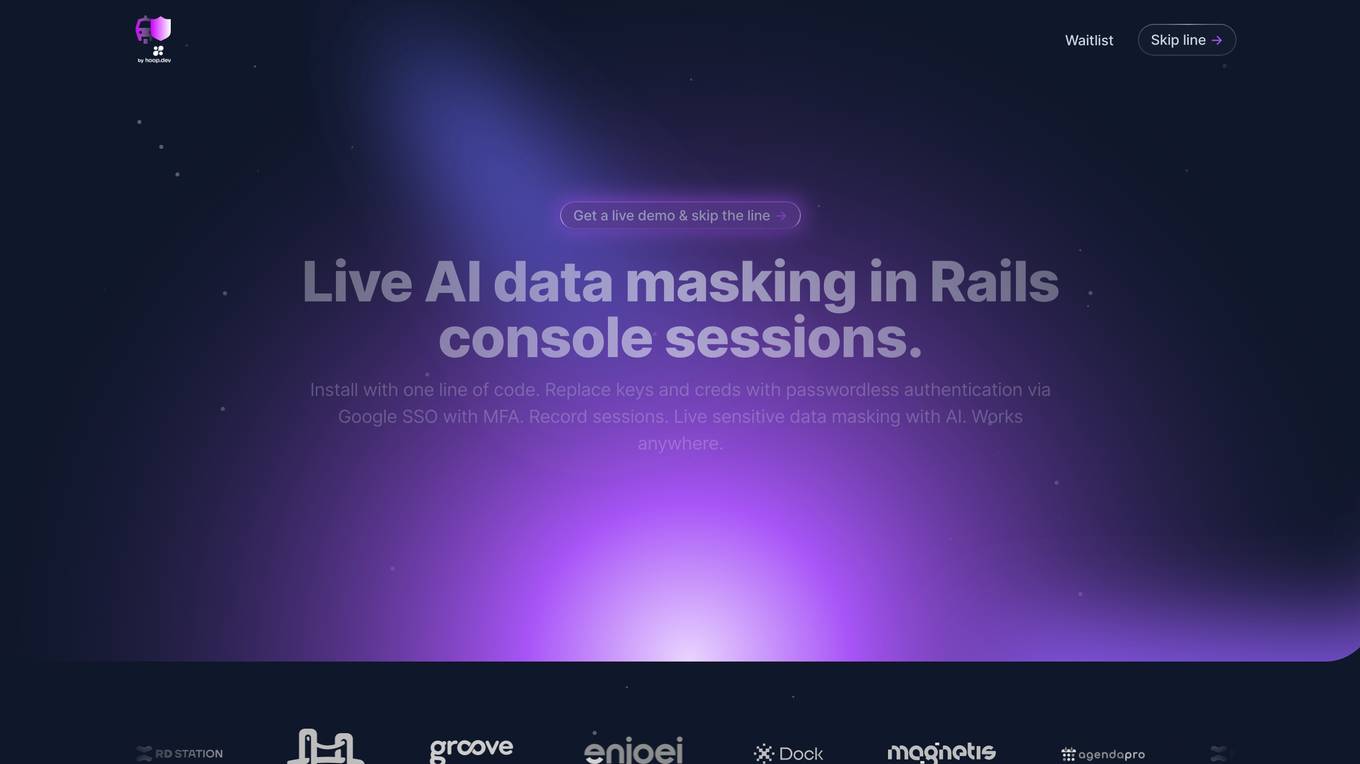
Hoop.dev
Hoop.dev is an AI application that provides live AI data masking in Rails console sessions. It offers shield Rails console access, automated employee onboarding & off-boarding, and AI data masking to protect customer data with a plug & play PII filter. The application enables compliant access without disrupting speed, automates HIPAA, SOC 1/2, PCI, GDPR, & other security controls, and reduces Rails Console use by finding repeated operations and turning Ruby scripts into repeatable no-code UIs.
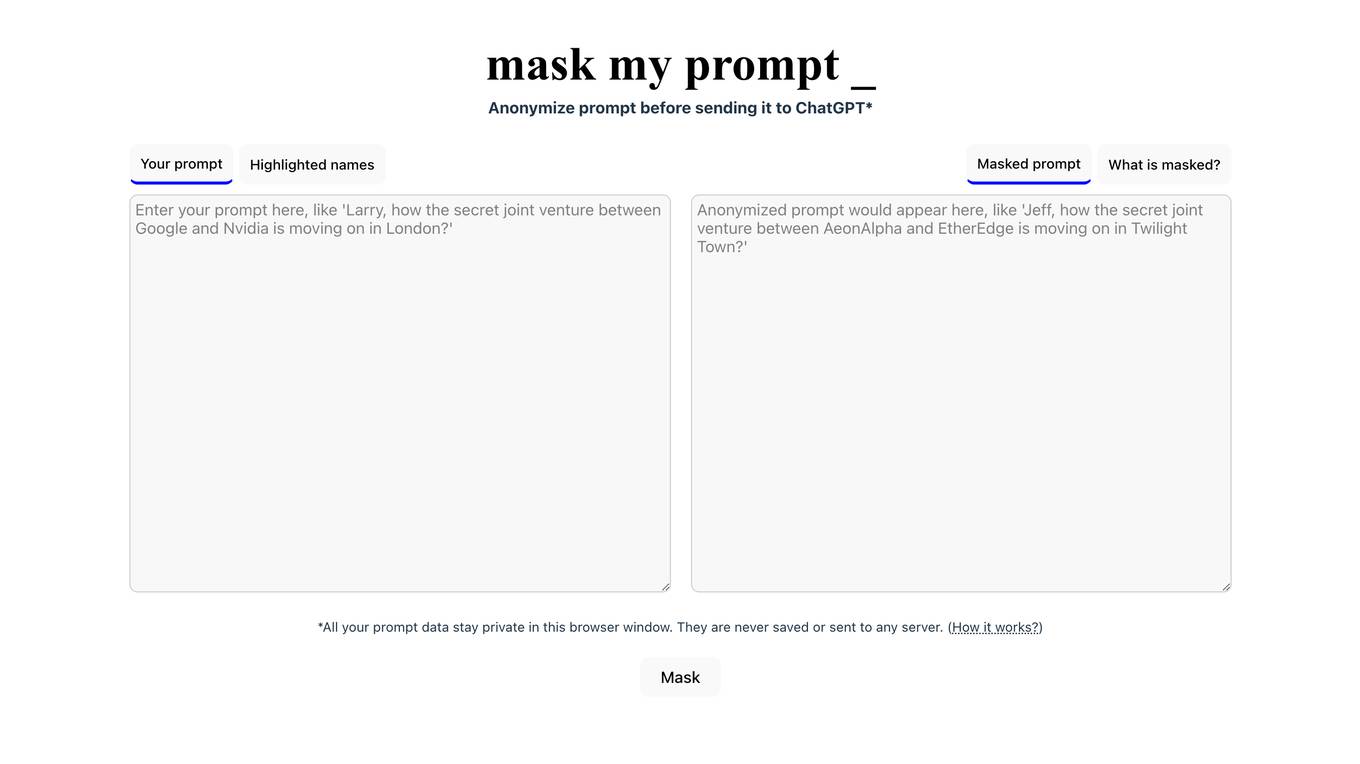
MaskMyPrompt
MaskMyPrompt is an AI tool designed to anonymize prompts before sending them to ChatGPT. It ensures that your prompt data remains private by masking names and sensitive information. The tool is programmed by Mike Ushakov and ChatGPT, utilizing the powerful Transformers.js. Users can reach out for support or feature requests via email or Twitter.

Undress App
Undress App is an AI tool that allows users to nudify any person in a photo using AI technology. The application provides a 3-step instruction on how to achieve this, emphasizing the importance of photo quality and proper positioning of the person in the image. It discusses the ethical implications of using AI to undress individuals and highlights the creative and potentially harmful uses of such technology. Undress App aims to offer a platform for creative self-expression and entertainment while acknowledging the potential misuse of the tool.
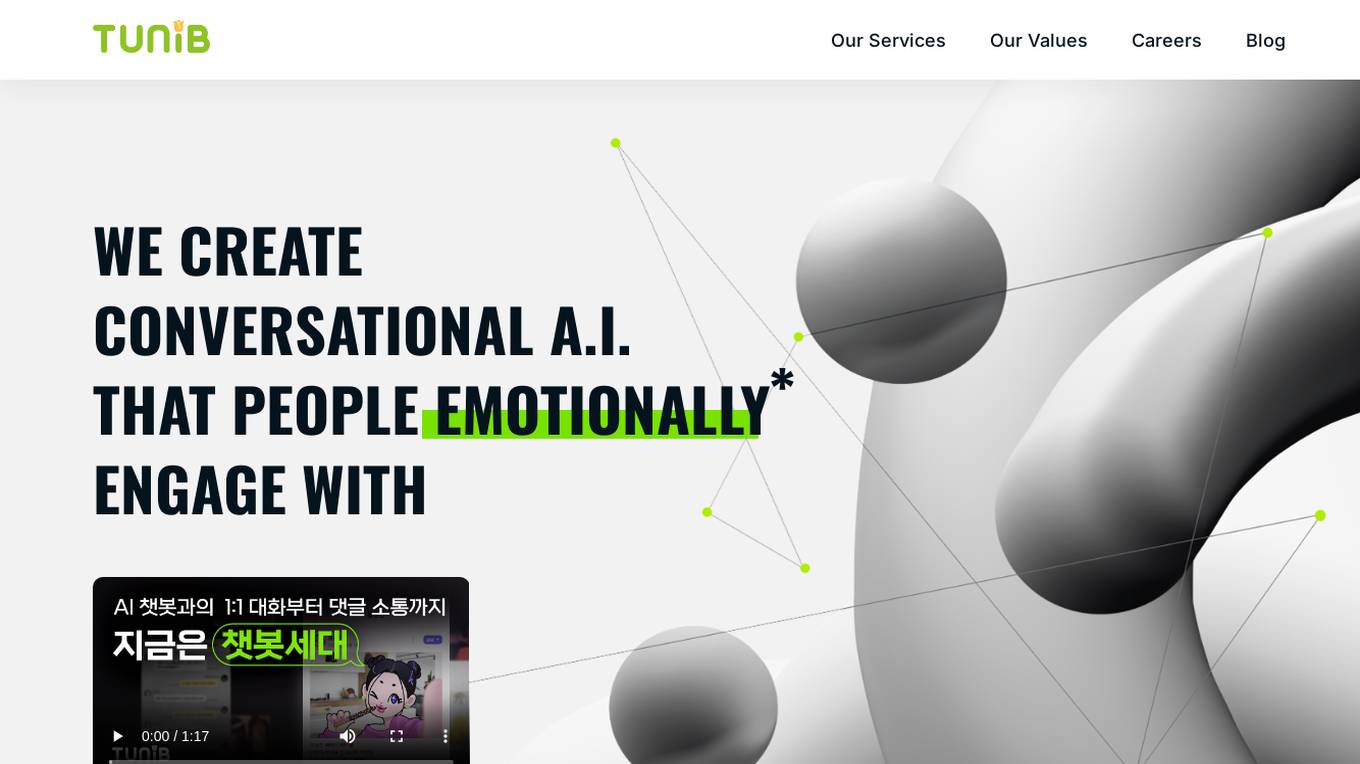
TUNiB
TUNiB is an AI application that specializes in creating conversational AI that people emotionally engage with. It offers services such as NLP APIs for detecting hate speech and breaches of private information, safety checks for toxicity detection, de-identification for masking personal information, and various analytics services like text, image, news, and video analytics. TUNiB aims to provide cutting-edge technologies while upholding high ethical standards.
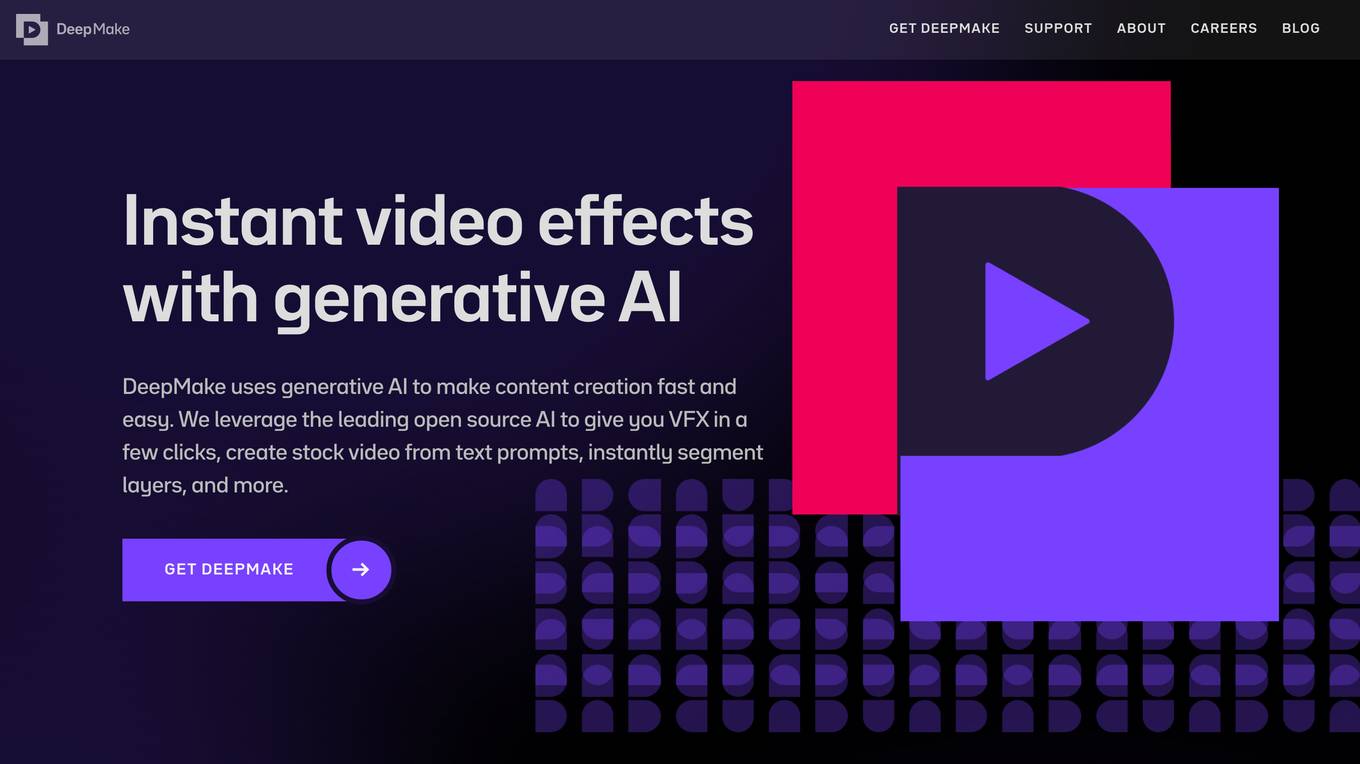
DeepMake
DeepMake is a powerful AI tool that empowers users to unleash their creativity by providing control over Open Source AI tools for enhancing visual content. With DeepMake, users can create, edit, and enhance images and videos without any usage limits or reliance on cloud services. The application runs locally on the user's computer, offering a higher level of control over AI-generated output and introducing new AI tools regularly to stay at the forefront of AI capabilities.
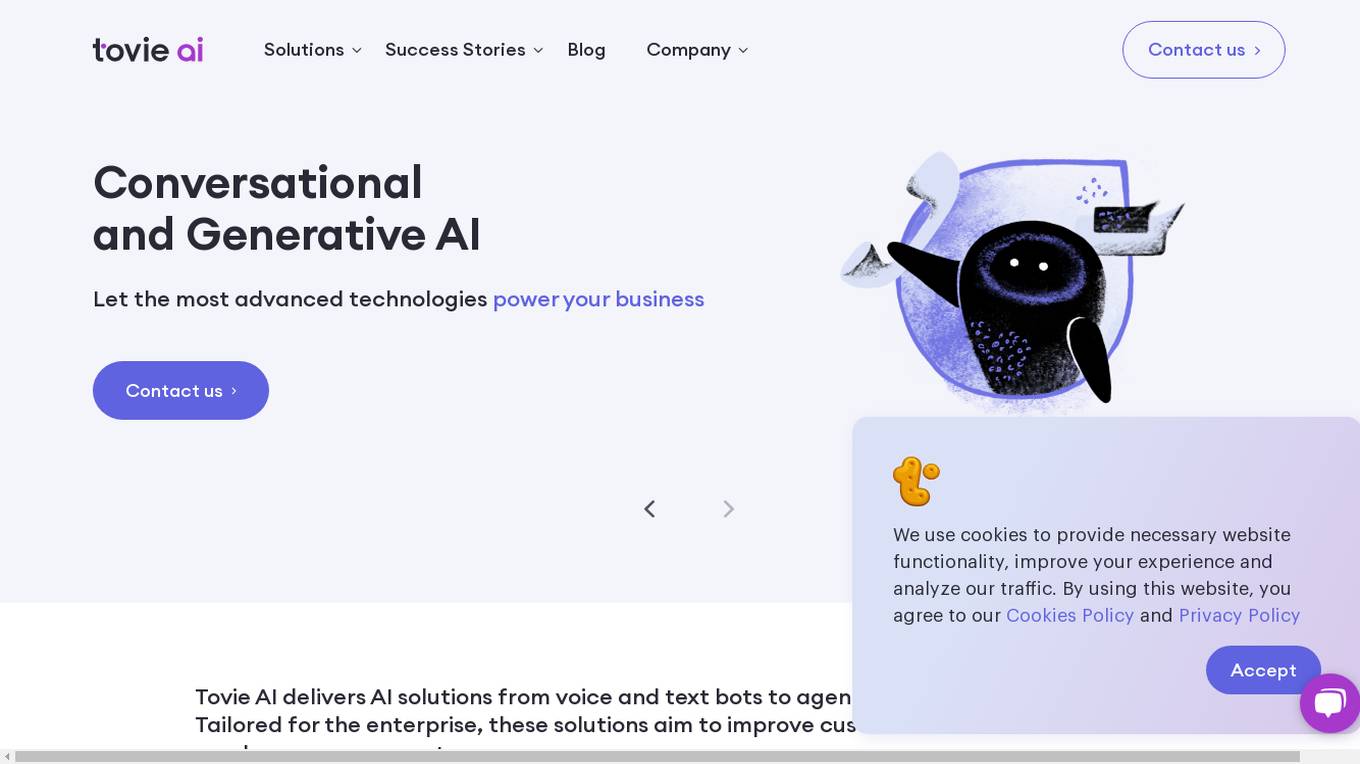
Tovie AI
Tovie AI is a platform offering Generative AI and on-prem LLM solutions for enterprise applications. It provides a range of AI tools such as GenAI Agents, Data Agent, Data Mask, AI Bots, Voice Bots, Chatbots, and Sector-specific Assistants. Tovie AI aims to enhance customer service, boost employee engagement, and improve business operations through its tailored AI solutions. The platform also offers consulting services to help businesses leverage Generative AI for business optimization and growth.
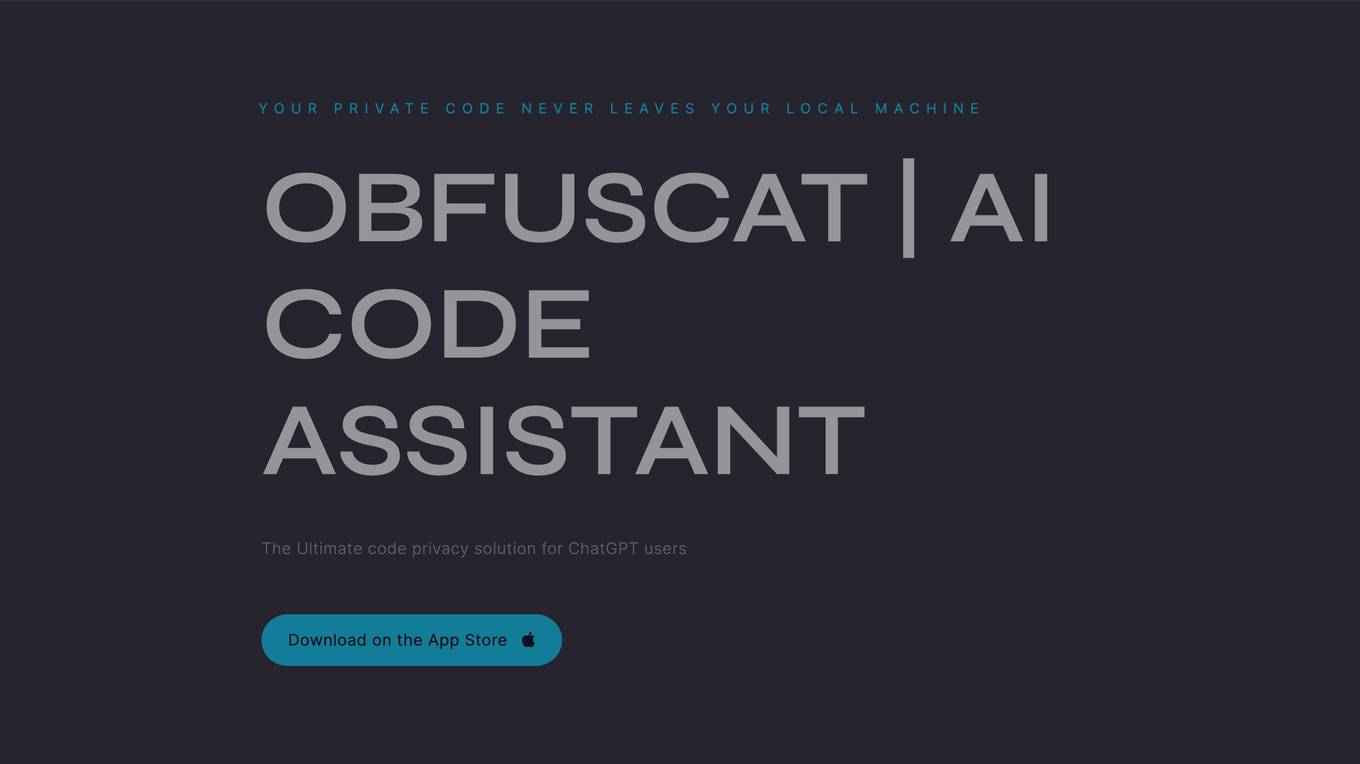
ObfusCat
ObfusCat is an AI Code Assistant that prioritizes the privacy and security of developers' code by ensuring it never leaves the local machine. It shields users from legal implications of sharing code with third parties and provides a layer of security and confidentiality. The application utilizes a proprietary algorithm to mask and unmask code before and after interacting with ChatGPT for code generation. ObfusCat is designed to streamline code writing, bug fixing, and code explanation processes while maintaining the privacy of the user's code.
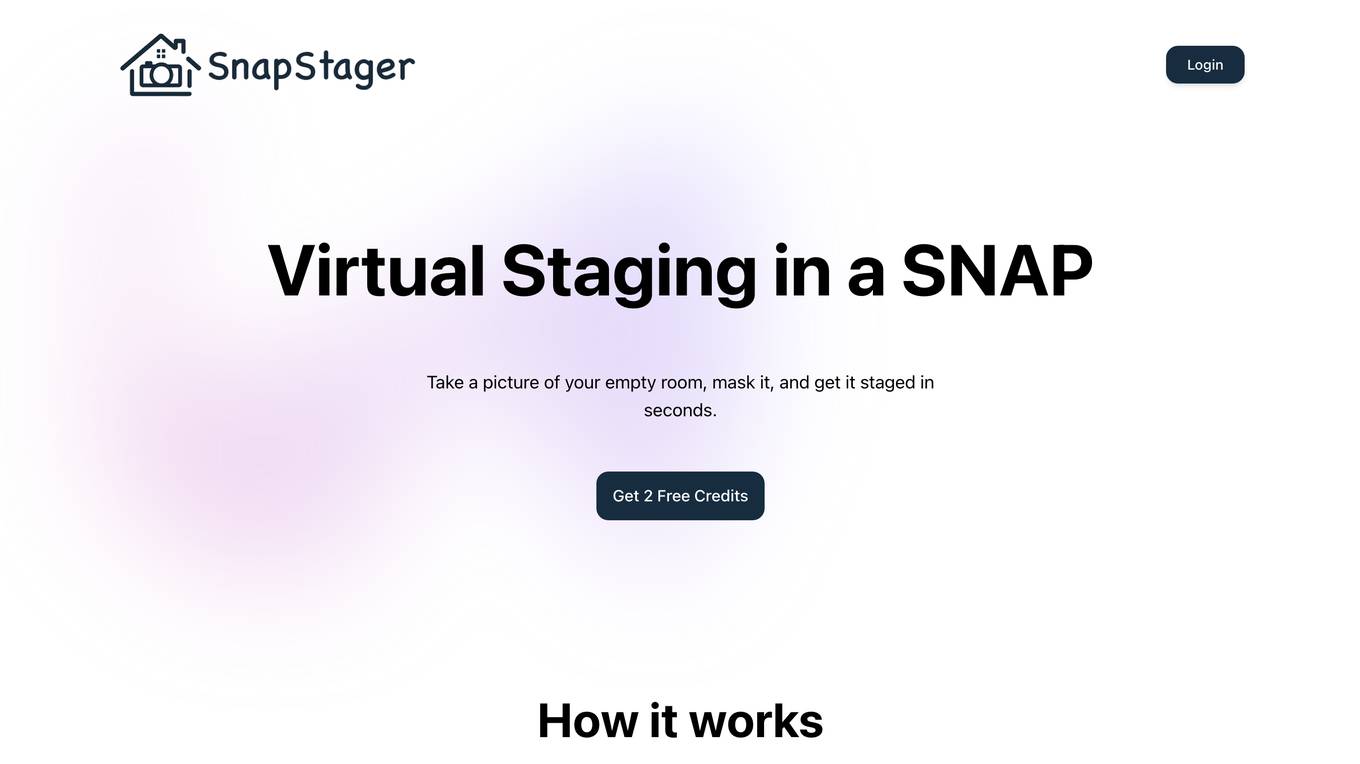
Virtual Staging
Virtual Staging is an AI-powered tool that allows you to virtually stage your empty rooms in seconds. Simply take a picture of your empty room, mask it, and get it staged in seconds. Virtual Staging is the only solution you need for virtual staging. It is realistic, lightning fast, and cheap. You can pay $1 instead of $25 for virtual staging.

Imagen
Imagen is a personalized AI photo editing assistant that offers solutions for editing, culling, and cloud storage. It provides professional photographers with an AI-powered post-production solution that learns their personal style, saves time, and offers consistent, accurate, and personalized editing in under 0.5 seconds per photo. Imagen also features a Personal AI Profile that evolves and learns from the user, additional AI tools like Crop, Straighten, Subject Mask, and Smooth Skin, and access to Talent AI Profiles by leading international photographers. The application aims to streamline the editing workflow, enhance efficiency, and provide a seamless cloud storage solution for photographers.
20 - Open Source AI Tools
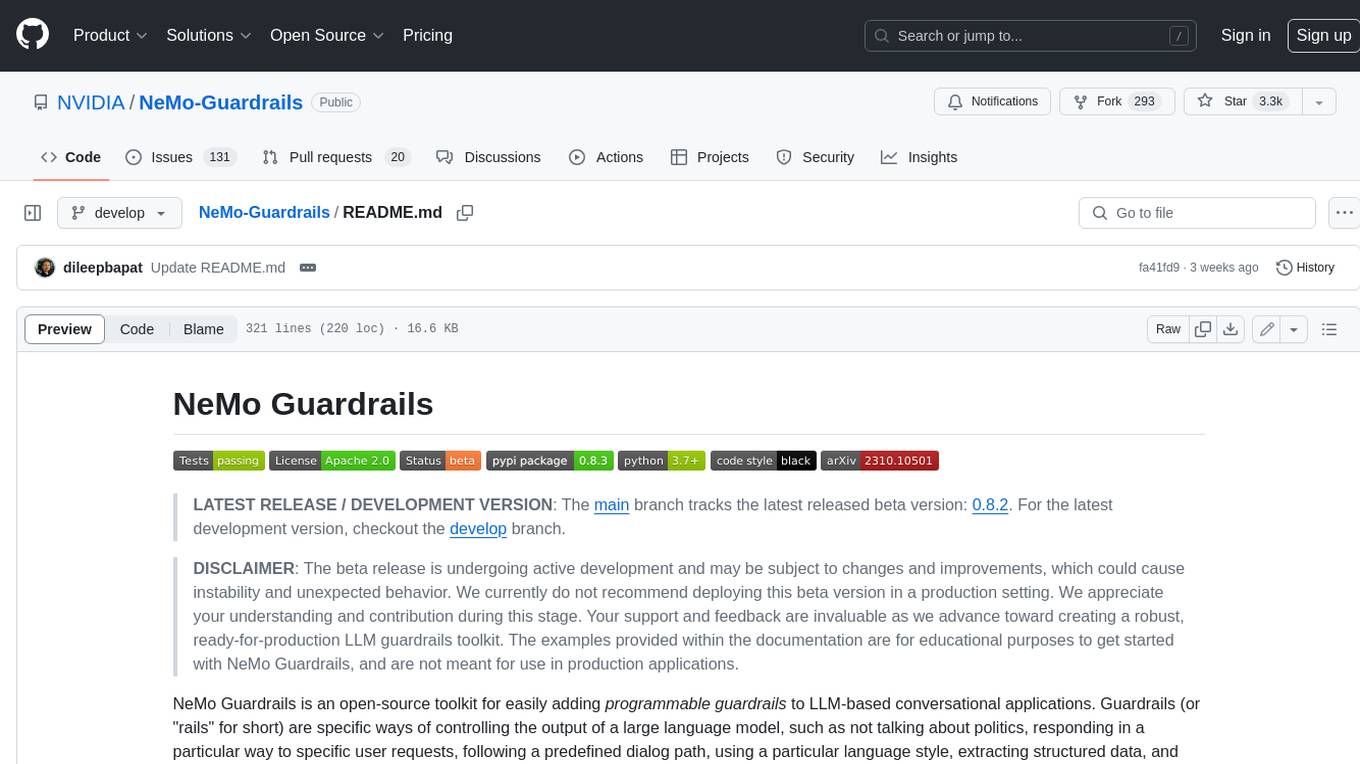
NeMo-Guardrails
NeMo Guardrails is an open-source toolkit for easily adding _programmable guardrails_ to LLM-based conversational applications. Guardrails (or "rails" for short) are specific ways of controlling the output of a large language model, such as not talking about politics, responding in a particular way to specific user requests, following a predefined dialog path, using a particular language style, extracting structured data, and more.
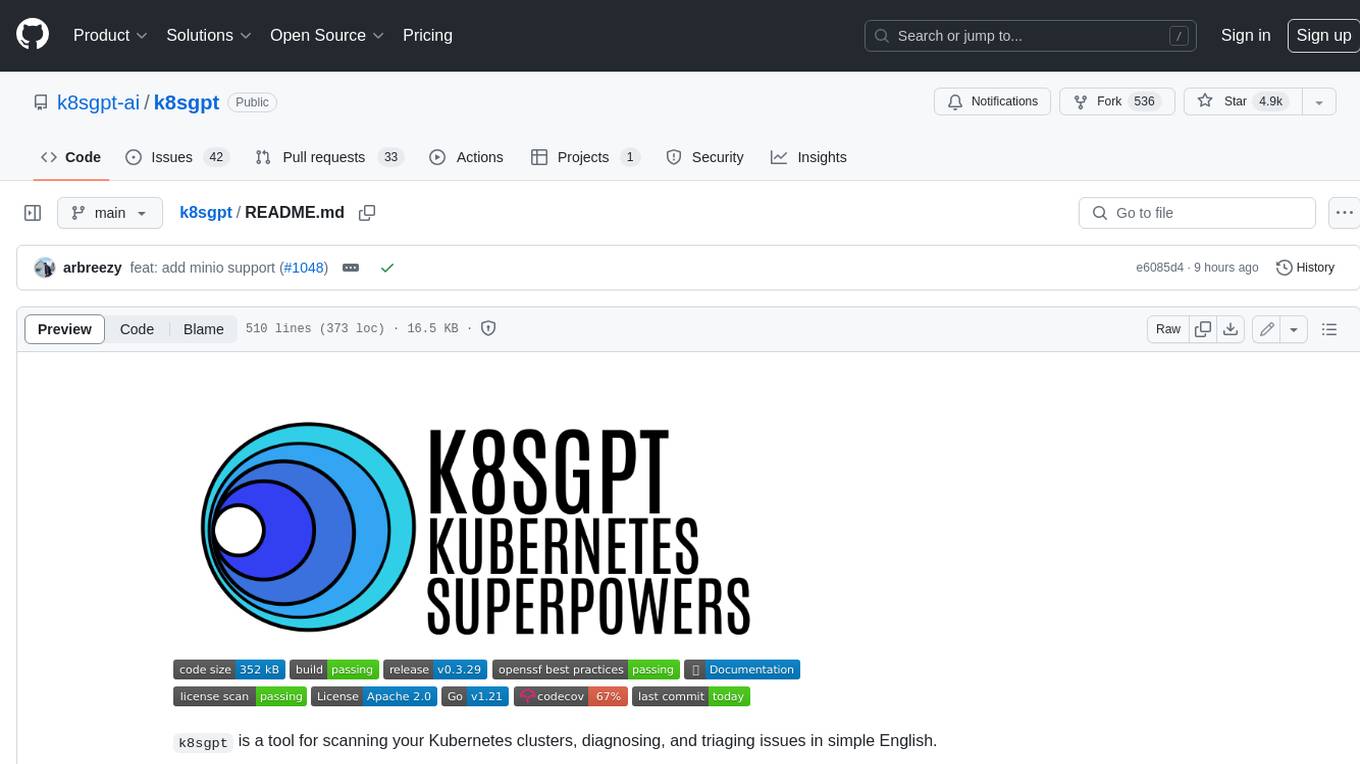
k8sgpt
K8sGPT is a tool for scanning your Kubernetes clusters, diagnosing, and triaging issues in simple English. It has SRE experience codified into its analyzers and helps to pull out the most relevant information to enrich it with AI.
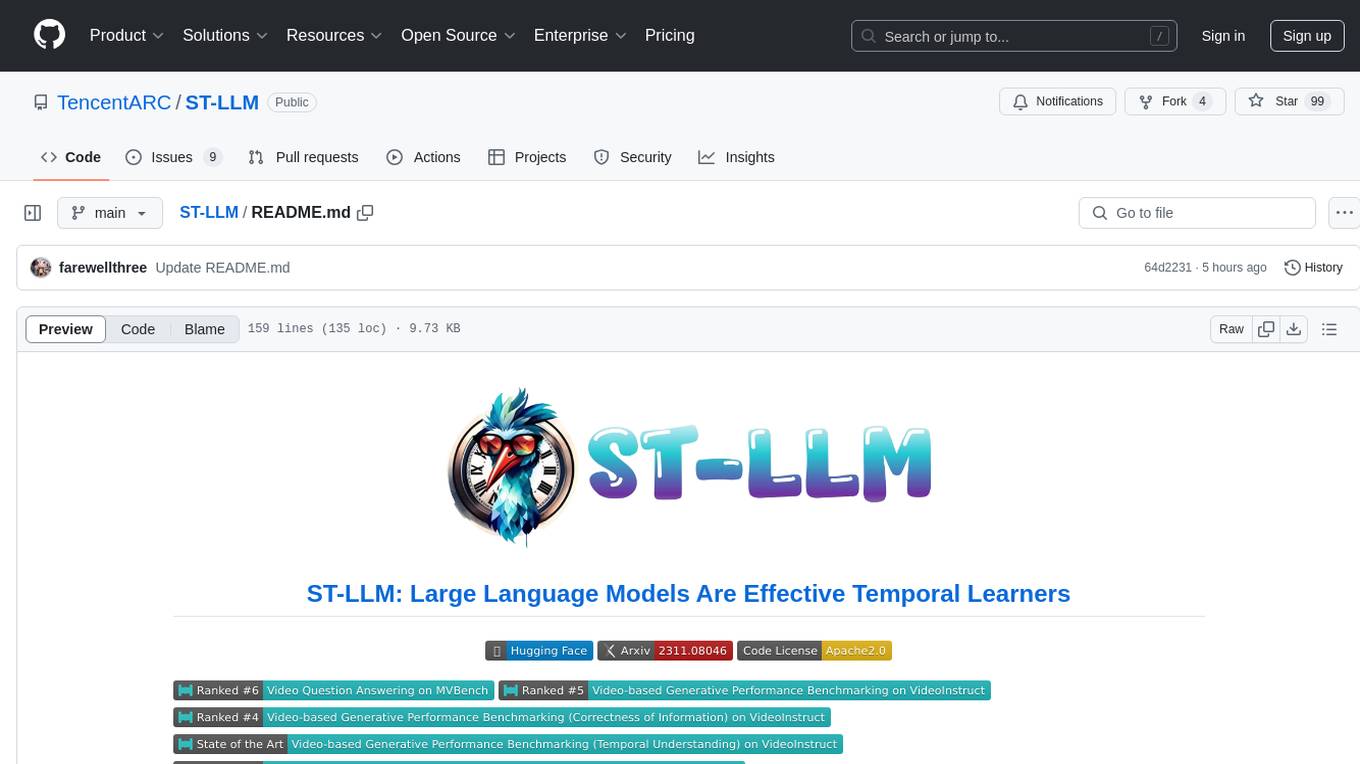
ST-LLM
ST-LLM is a temporal-sensitive video large language model that incorporates joint spatial-temporal modeling, dynamic masking strategy, and global-local input module for effective video understanding. It has achieved state-of-the-art results on various video benchmarks. The repository provides code and weights for the model, along with demo scripts for easy usage. Users can train, validate, and use the model for tasks like video description, action identification, and reasoning.

litdata
LitData is a tool designed for blazingly fast, distributed streaming of training data from any cloud storage. It allows users to transform and optimize data in cloud storage environments efficiently and intuitively, supporting various data types like images, text, video, audio, geo-spatial, and multimodal data. LitData integrates smoothly with frameworks such as LitGPT and PyTorch, enabling seamless streaming of data to multiple machines. Key features include multi-GPU/multi-node support, easy data mixing, pause & resume functionality, support for profiling, memory footprint reduction, cache size configuration, and on-prem optimizations. The tool also provides benchmarks for measuring streaming speed and conversion efficiency, along with runnable templates for different data types. LitData enables infinite cloud data processing by utilizing the Lightning.ai platform to scale data processing with optimized machines.
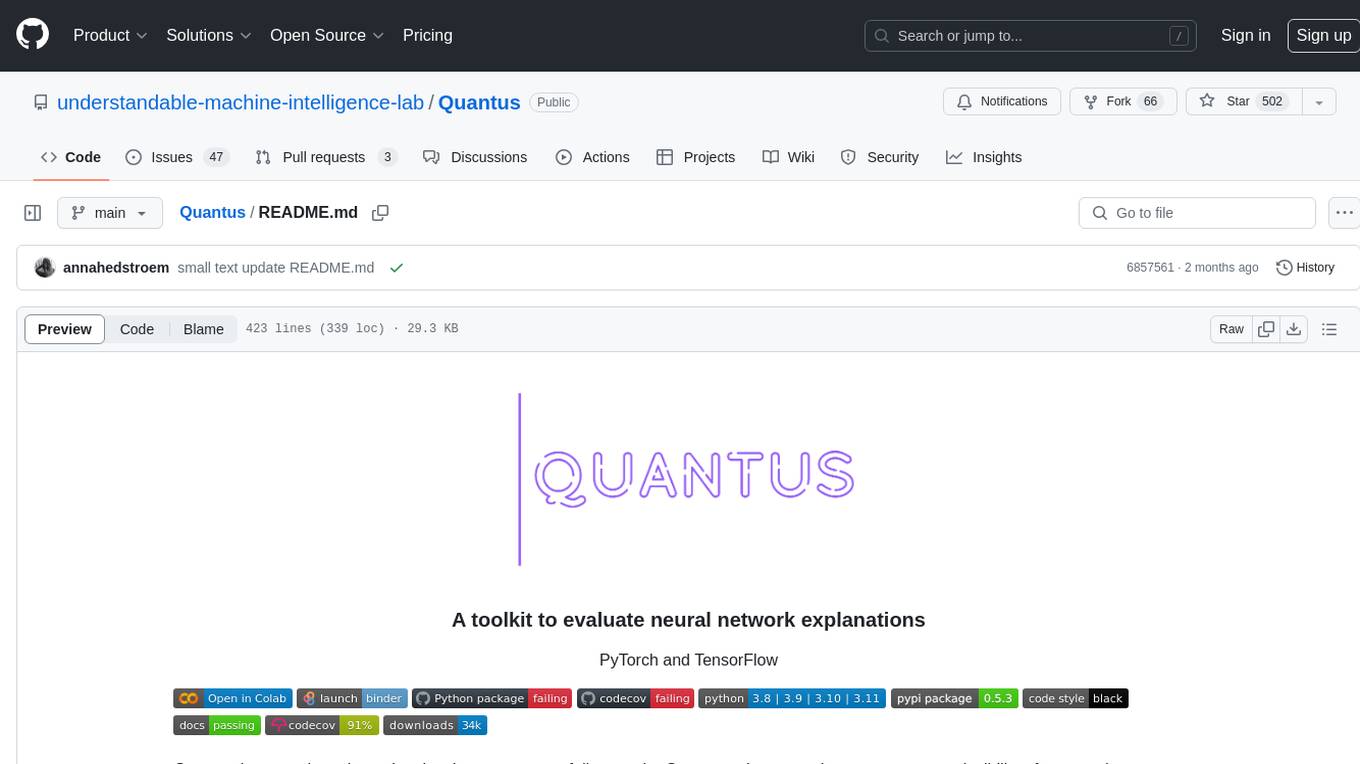
Quantus
Quantus is a toolkit designed for the evaluation of neural network explanations. It offers more than 30 metrics in 6 categories for eXplainable Artificial Intelligence (XAI) evaluation. The toolkit supports different data types (image, time-series, tabular, NLP) and models (PyTorch, TensorFlow). It provides built-in support for explanation methods like captum, tf-explain, and zennit. Quantus is under active development and aims to provide a comprehensive set of quantitative evaluation metrics for XAI methods.
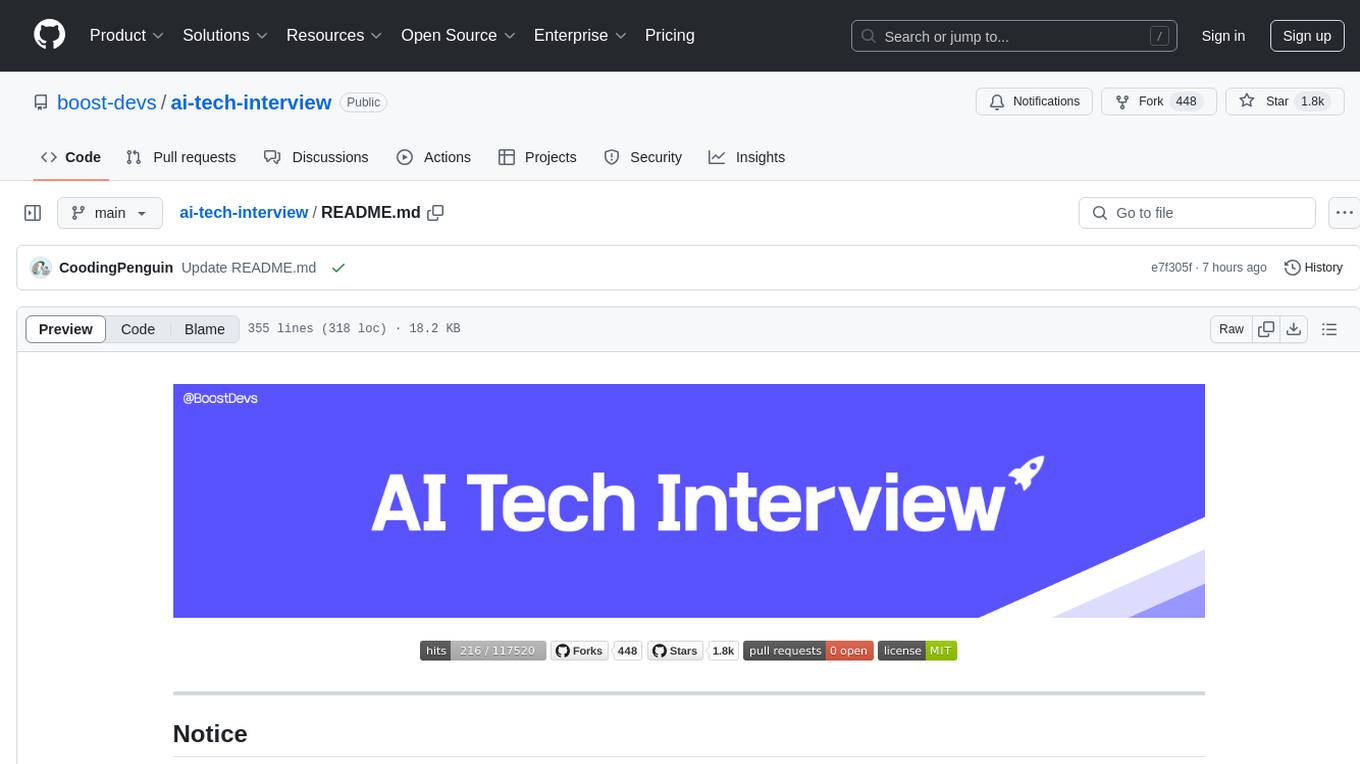
ai-tech-interview
This repository contains a collection of interview questions related to various topics such as statistics, machine learning, deep learning, Python, networking, operating systems, data structures, and algorithms. The questions cover a wide range of concepts and are suitable for individuals preparing for technical interviews in the field of artificial intelligence and data science.
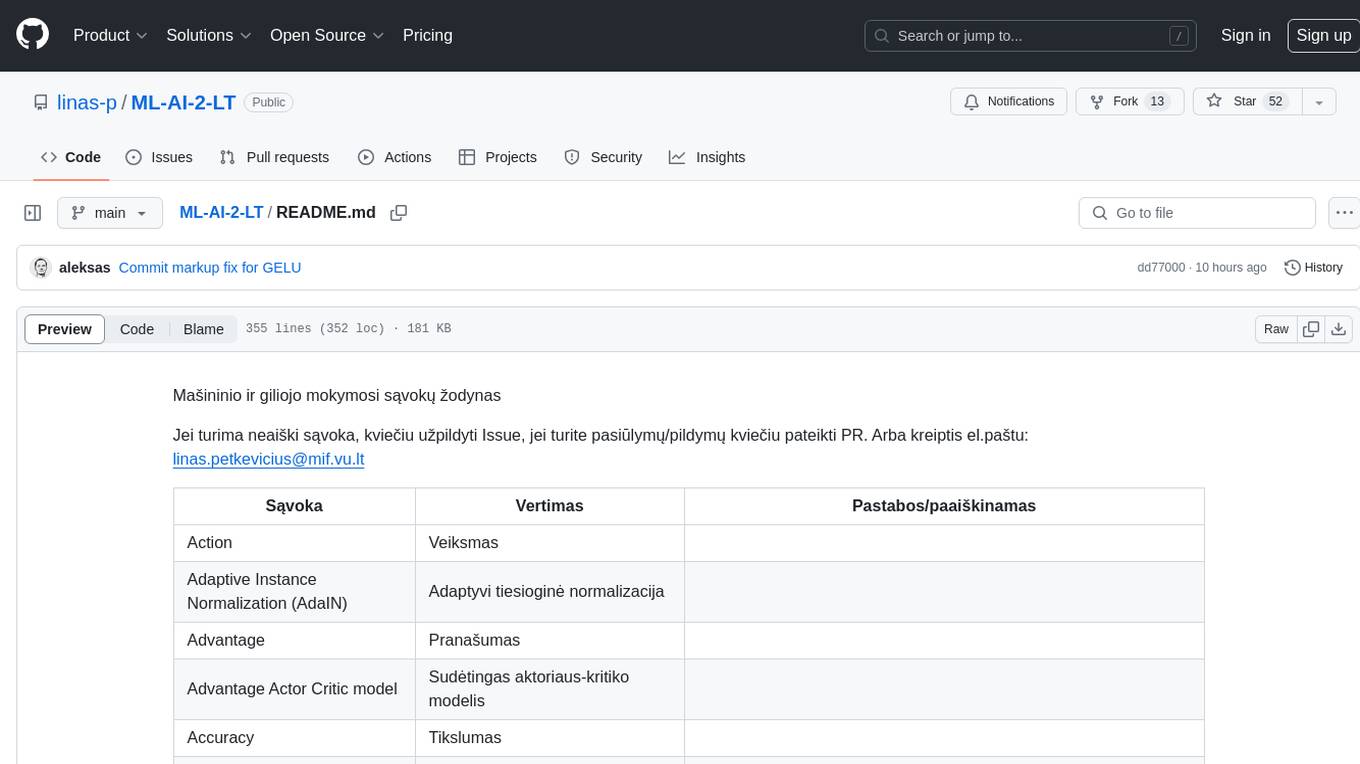
ML-AI-2-LT
ML-AI-2-LT is a repository that serves as a glossary for machine learning and deep learning concepts. It contains translations and explanations of various terms related to artificial intelligence, including definitions and notes. Users can contribute by filling issues for unclear concepts or by submitting pull requests with suggestions or additions. The repository aims to provide a comprehensive resource for understanding key terminology in the field of AI and machine learning.
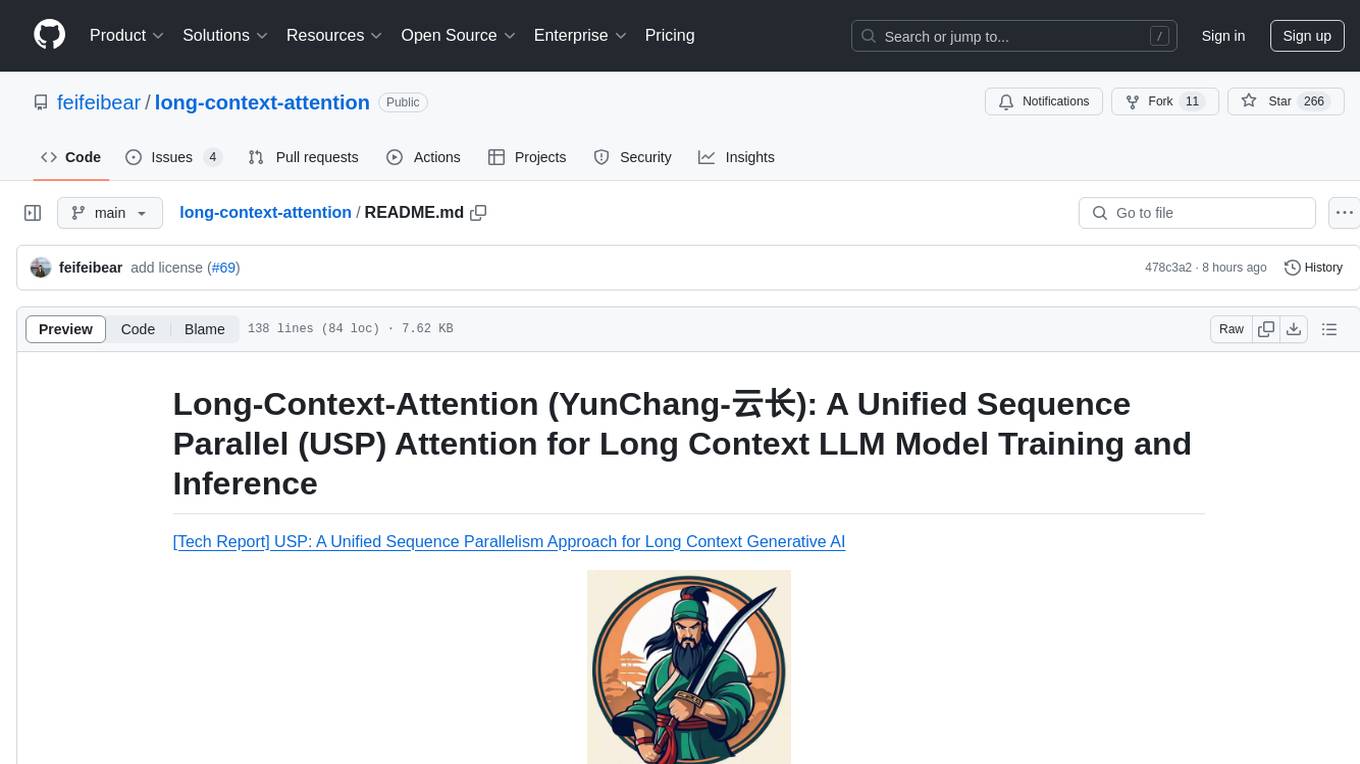
long-context-attention
Long-Context-Attention (YunChang) is a unified sequence parallel approach that combines the strengths of DeepSpeed-Ulysses-Attention and Ring-Attention to provide a versatile and high-performance solution for long context LLM model training and inference. It addresses the limitations of both methods by offering no limitation on the number of heads, compatibility with advanced parallel strategies, and enhanced performance benchmarks. The tool is verified in Megatron-LM and offers best practices for 4D parallelism, making it suitable for various attention mechanisms and parallel computing advancements.
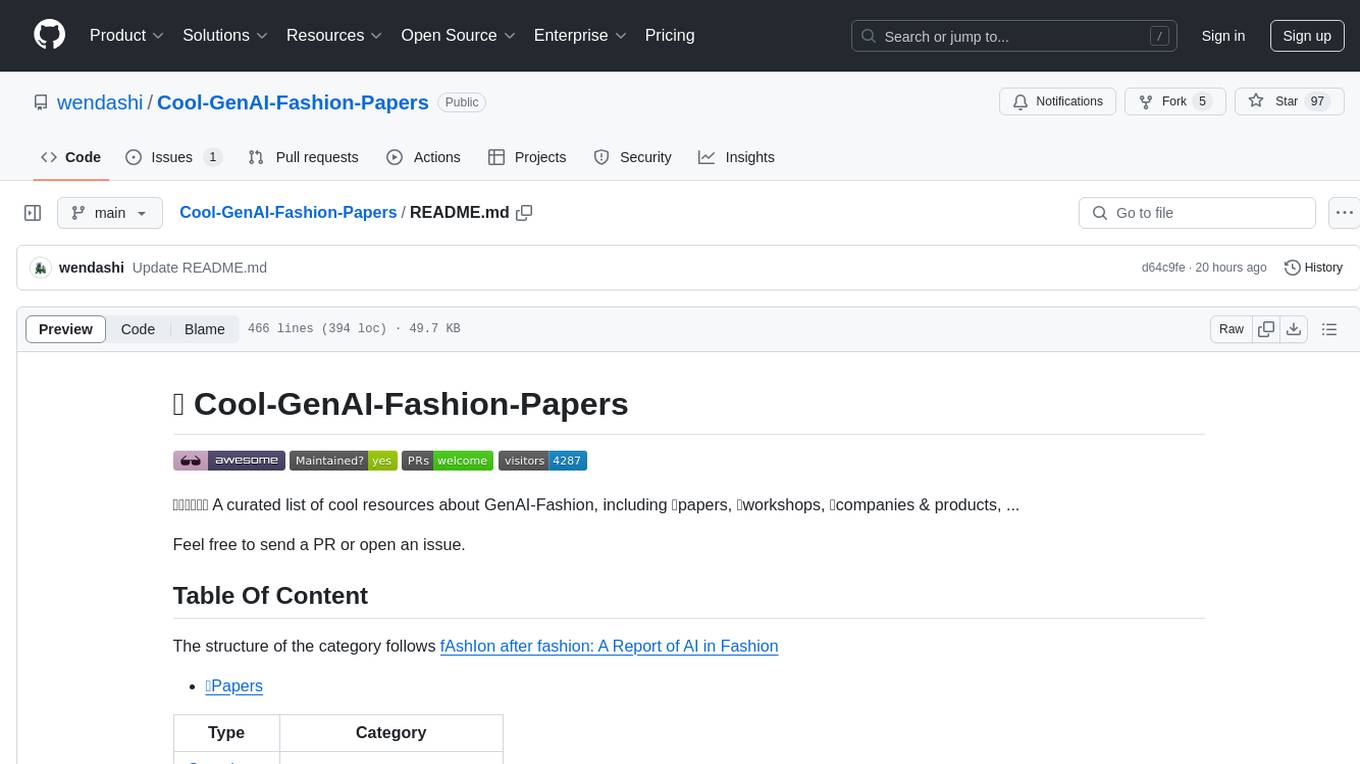
Cool-GenAI-Fashion-Papers
Cool-GenAI-Fashion-Papers is a curated list of resources related to GenAI-Fashion, including papers, workshops, companies, and products. It covers a wide range of topics such as fashion design synthesis, outfit recommendation, fashion knowledge extraction, trend analysis, and more. The repository provides valuable insights and resources for researchers, industry professionals, and enthusiasts interested in the intersection of AI and fashion.
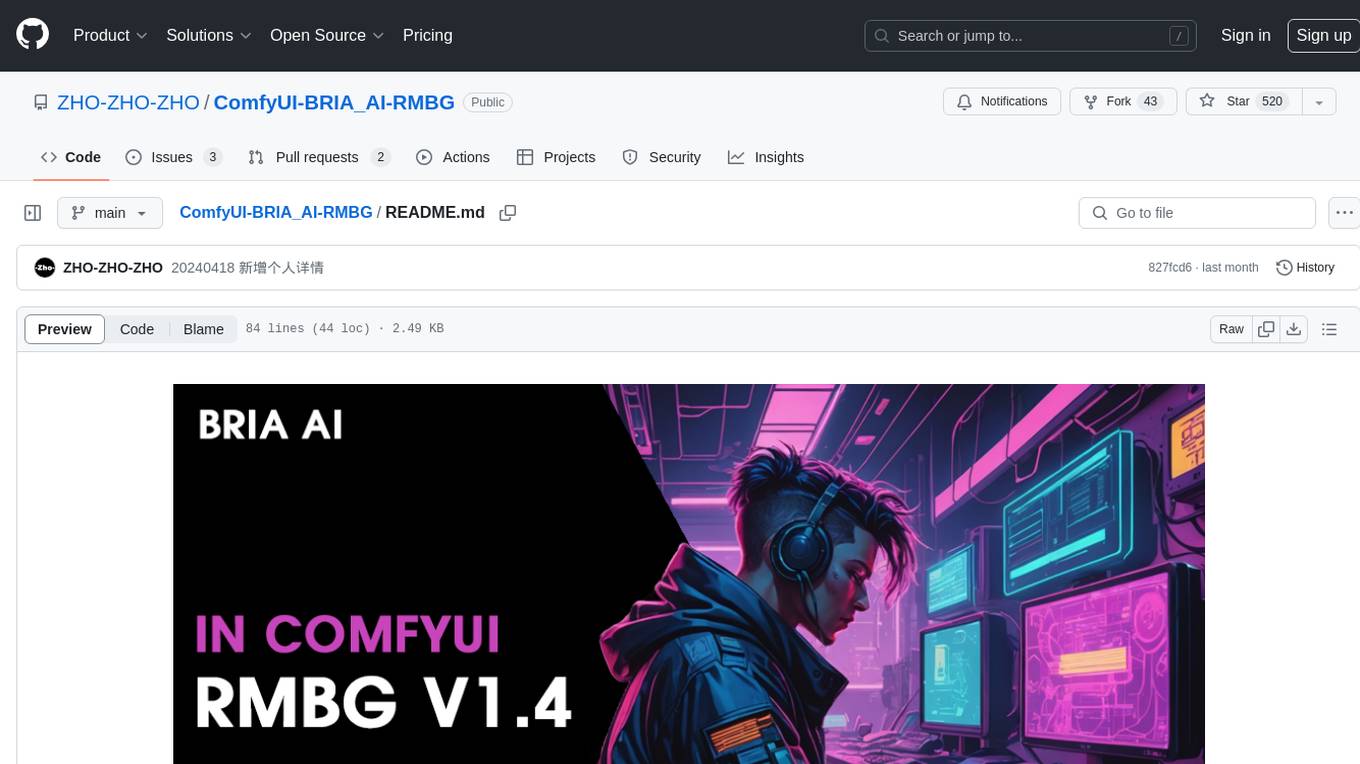
ComfyUI-BRIA_AI-RMBG
ComfyUI-BRIA_AI-RMBG is an unofficial implementation of the BRIA Background Removal v1.4 model for ComfyUI. The tool supports batch processing, including video background removal, and introduces a new mask output feature. Users can install the tool using ComfyUI Manager or manually by cloning the repository. The tool includes nodes for automatically loading the Removal v1.4 model and removing backgrounds. Updates include support for batch processing and the addition of a mask output feature.
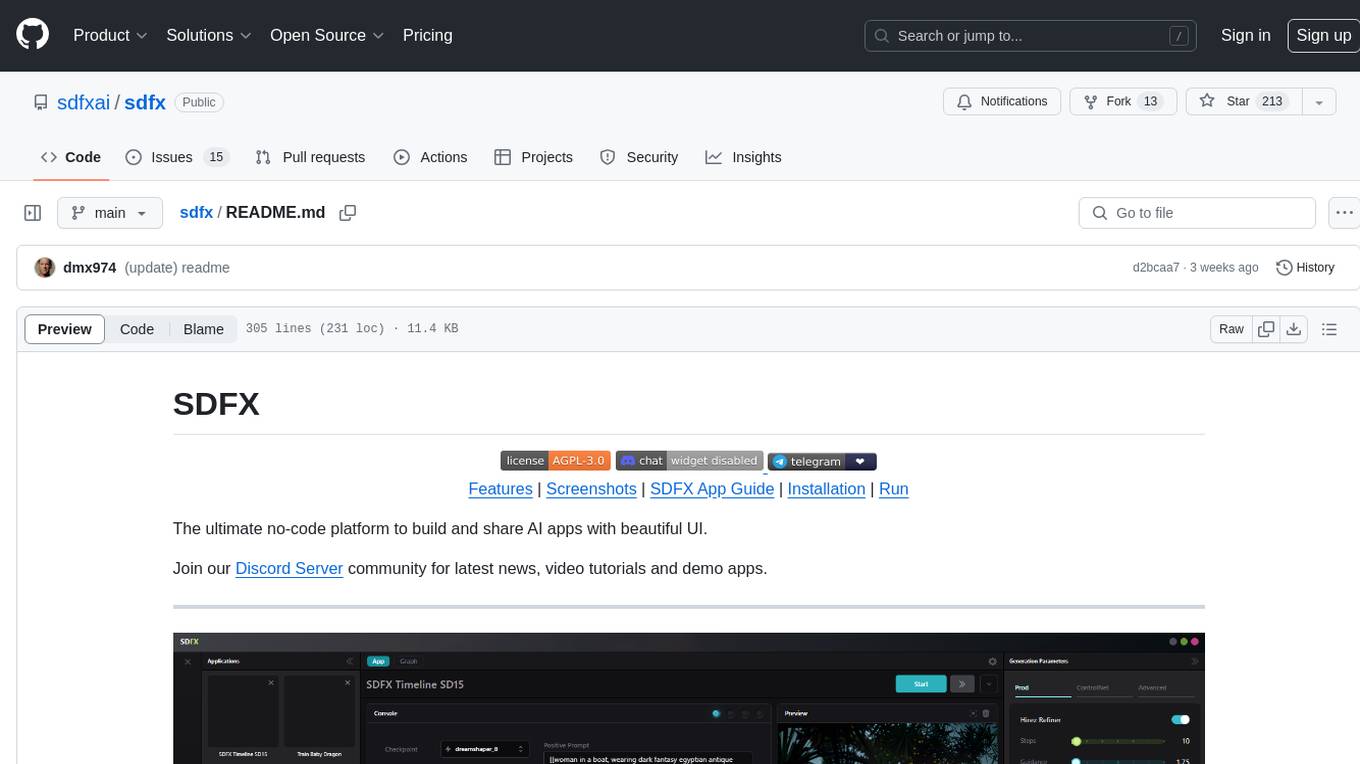
sdfx
SDFX is the ultimate no-code platform for building and sharing AI apps with beautiful UI. It enables the creation of user-friendly interfaces for complex workflows by combining Comfy workflow with a UI. The tool is designed to merge the benefits of form-based UI and graph-node based UI, allowing users to create intricate graphs with a high-level UI overlay. SDFX is fully compatible with ComfyUI, abstracting the need for installing ComfyUI. It offers features like animated graph navigation, node bookmarks, UI debugger, custom nodes manager, app and template export, image and mask editor, and more. The tool compiles as a native app or web app, making it easy to maintain and add new features.
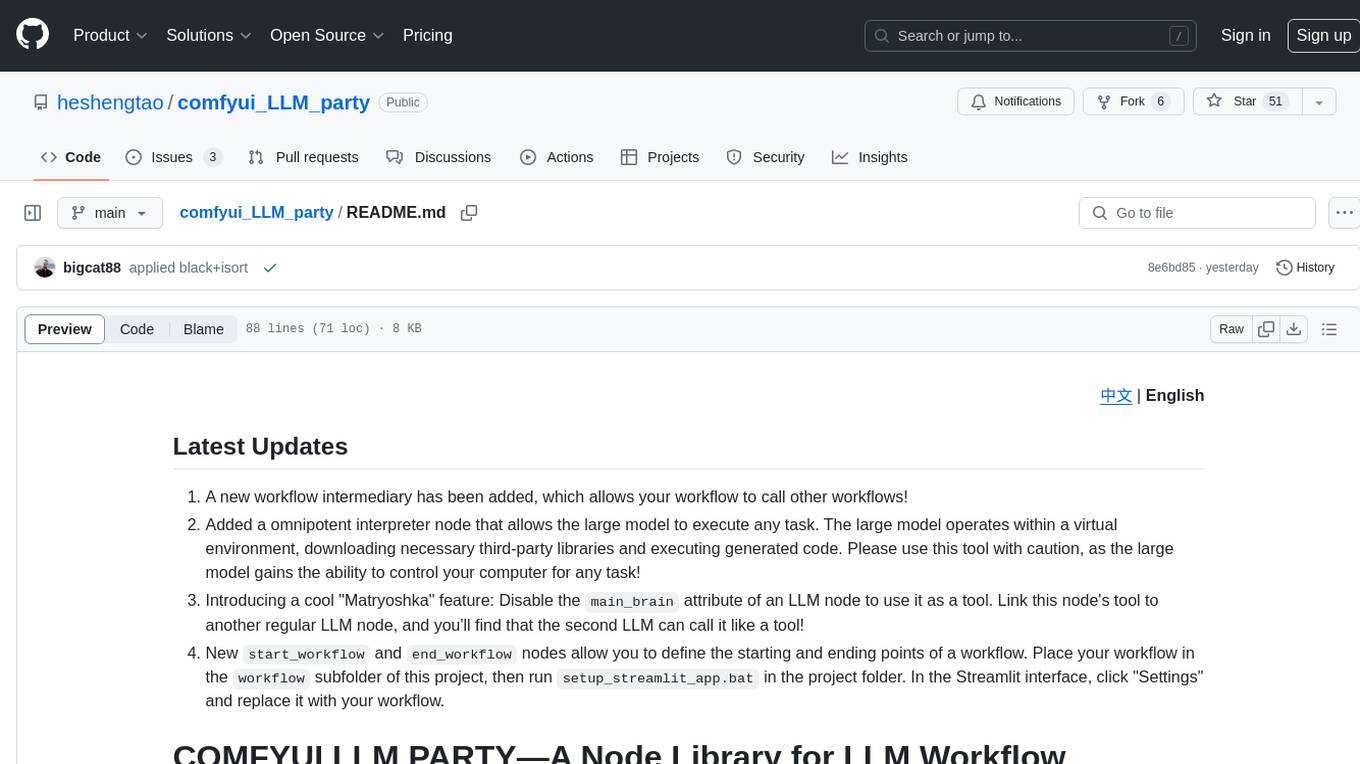
comfyui_LLM_party
COMFYUI LLM PARTY is a node library designed for LLM workflow development in ComfyUI, an extremely minimalist UI interface primarily used for AI drawing and SD model-based workflows. The project aims to provide a complete set of nodes for constructing LLM workflows, enabling users to easily integrate them into existing SD workflows. It features various functionalities such as API integration, local large model integration, RAG support, code interpreters, online queries, conditional statements, looping links for large models, persona mask attachment, and tool invocations for weather lookup, time lookup, knowledge base, code execution, web search, and single-page search. Users can rapidly develop web applications using API + Streamlit and utilize LLM as a tool node. Additionally, the project includes an omnipotent interpreter node that allows the large model to perform any task, with recommendations to use the 'show_text' node for display output.
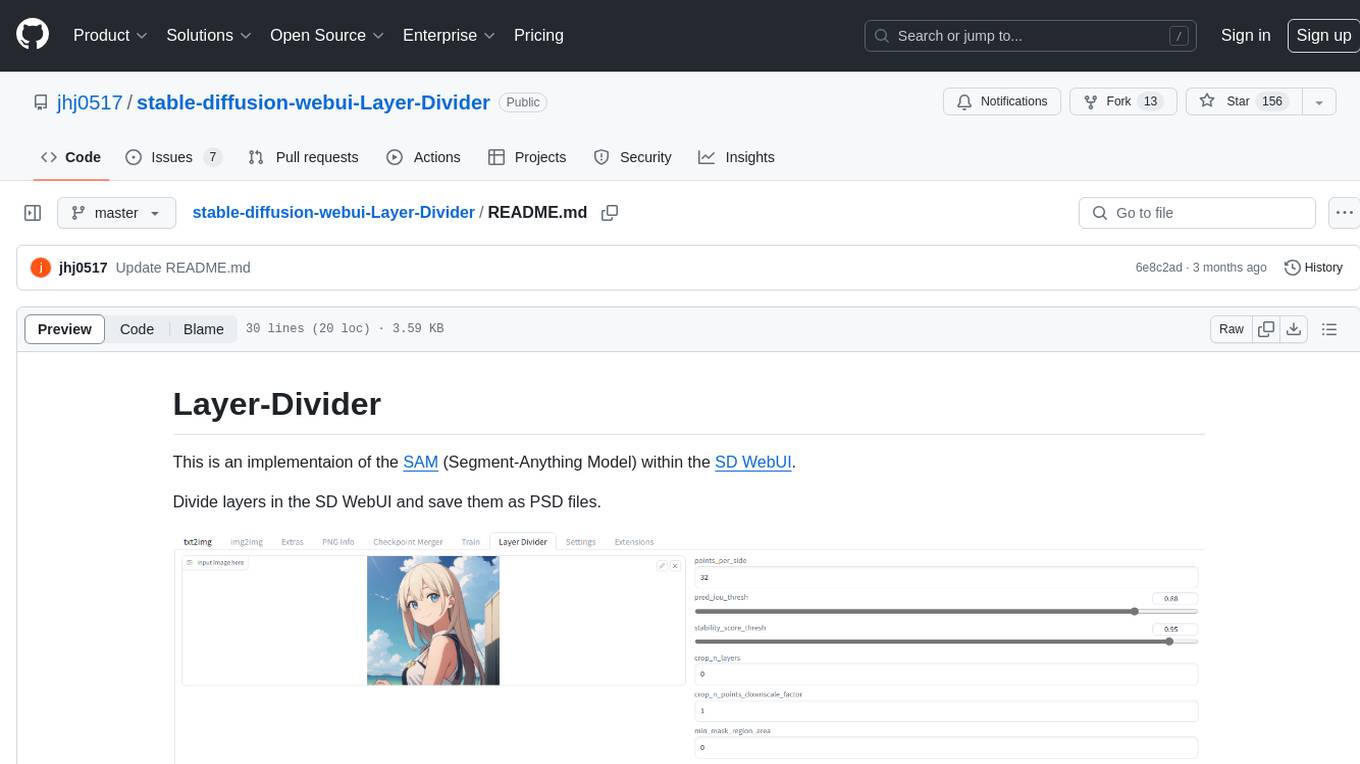
stable-diffusion-webui-Layer-Divider
This repository contains an implementation of the Segment-Anything Model (SAM) within the SD WebUI. It allows users to divide layers in the SD WebUI and save them as PSD files. Users can adjust parameters, click 'Generate', and view the output below. A PSD file will be saved in the designated folder. The tool provides various parameters for customization, such as points_per_side, pred_iou_thresh, stability_score_thresh, crops_n_layers, crop_n_points_downscale_factor, and min_mask_region_area.
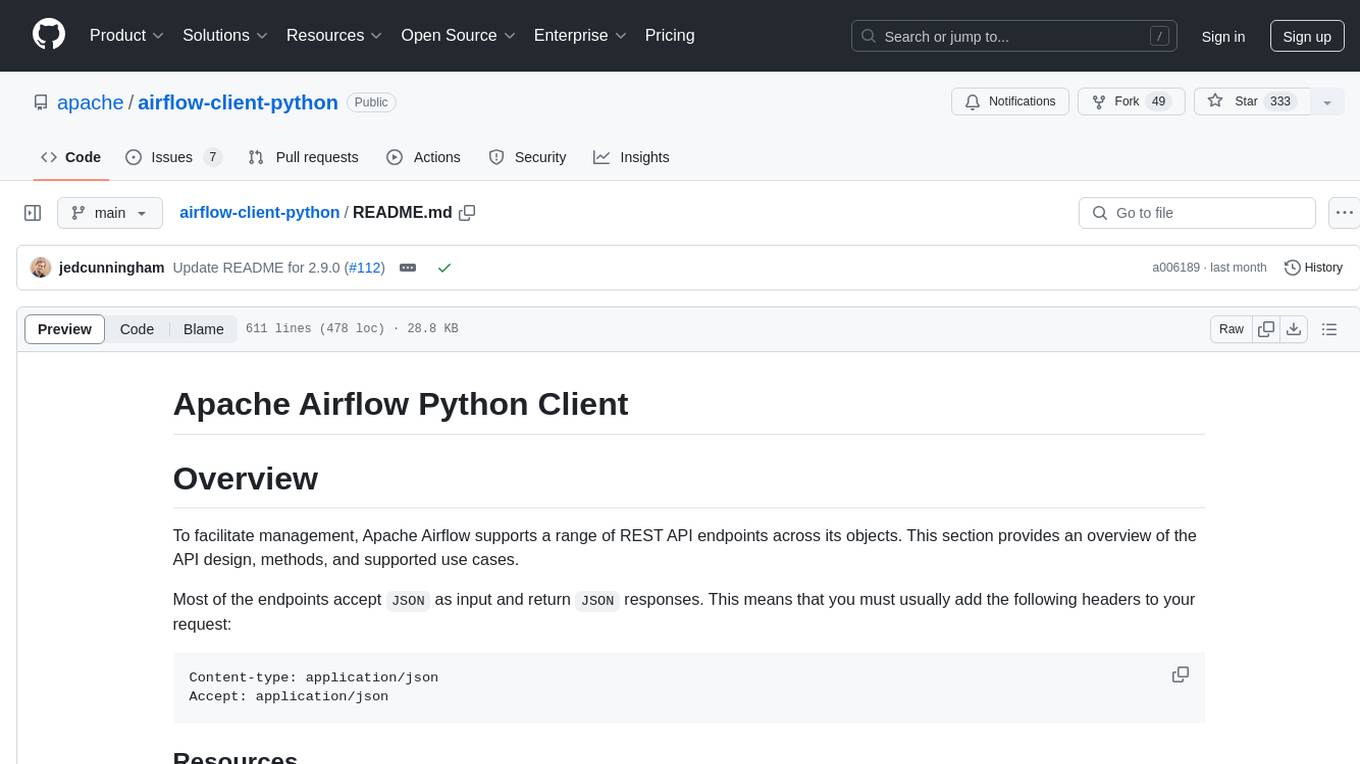
airflow-client-python
The Apache Airflow Python Client provides a range of REST API endpoints for managing Airflow metadata objects. It supports CRUD operations for resources, with endpoints accepting and returning JSON. Users can create, read, update, and delete resources. The API design follows conventions with consistent naming and field formats. Update mask is available for patch endpoints to specify fields for update. API versioning is not synchronized with Airflow releases, and changes go through a deprecation phase. The tool supports various authentication methods and error responses follow RFC 7807 format.
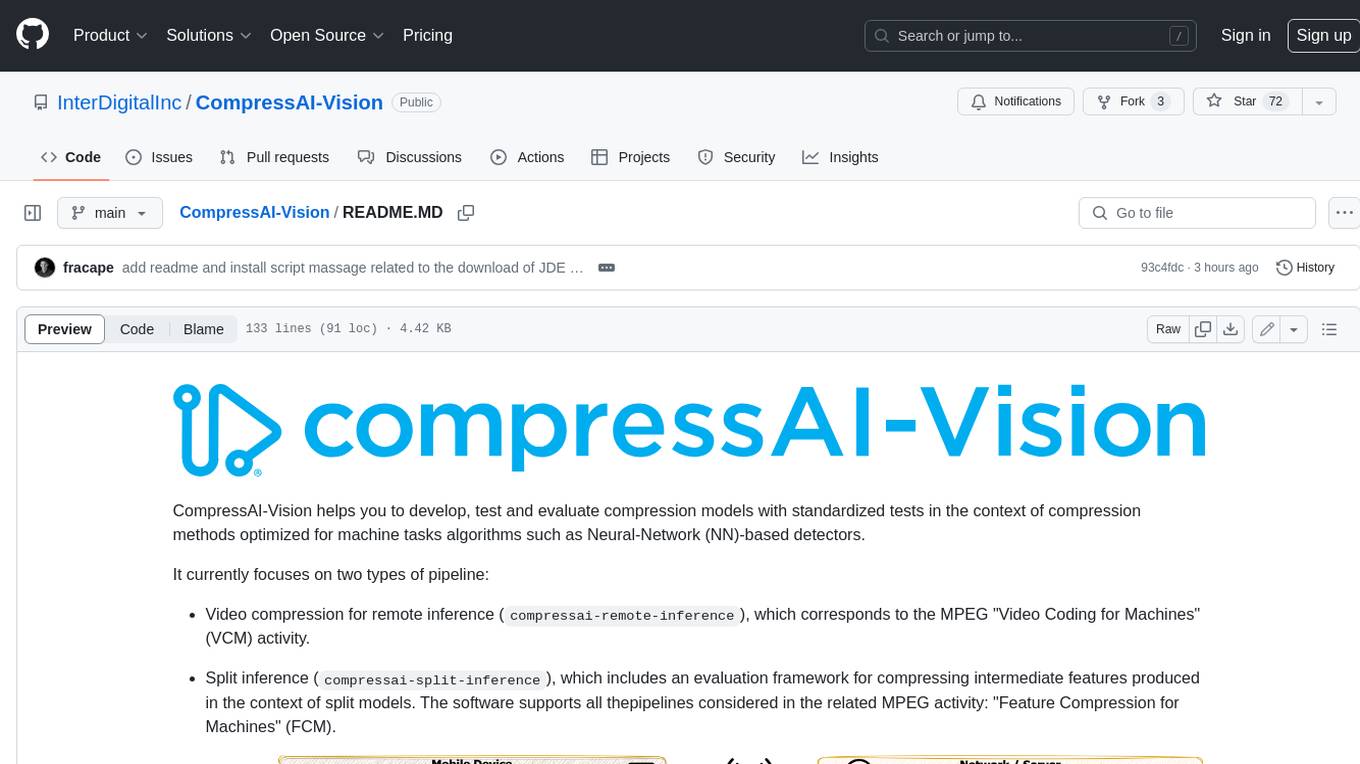
CompressAI-Vision
CompressAI-Vision is a tool that helps you develop, test, and evaluate compression models with standardized tests in the context of compression methods optimized for machine tasks algorithms such as Neural-Network (NN)-based detectors. It currently focuses on two types of pipeline: Video compression for remote inference (`compressai-remote-inference`), which corresponds to the MPEG "Video Coding for Machines" (VCM) activity. Split inference (`compressai-split-inference`), which includes an evaluation framework for compressing intermediate features produced in the context of split models. The software supports all the pipelines considered in the related MPEG activity: "Feature Compression for Machines" (FCM).
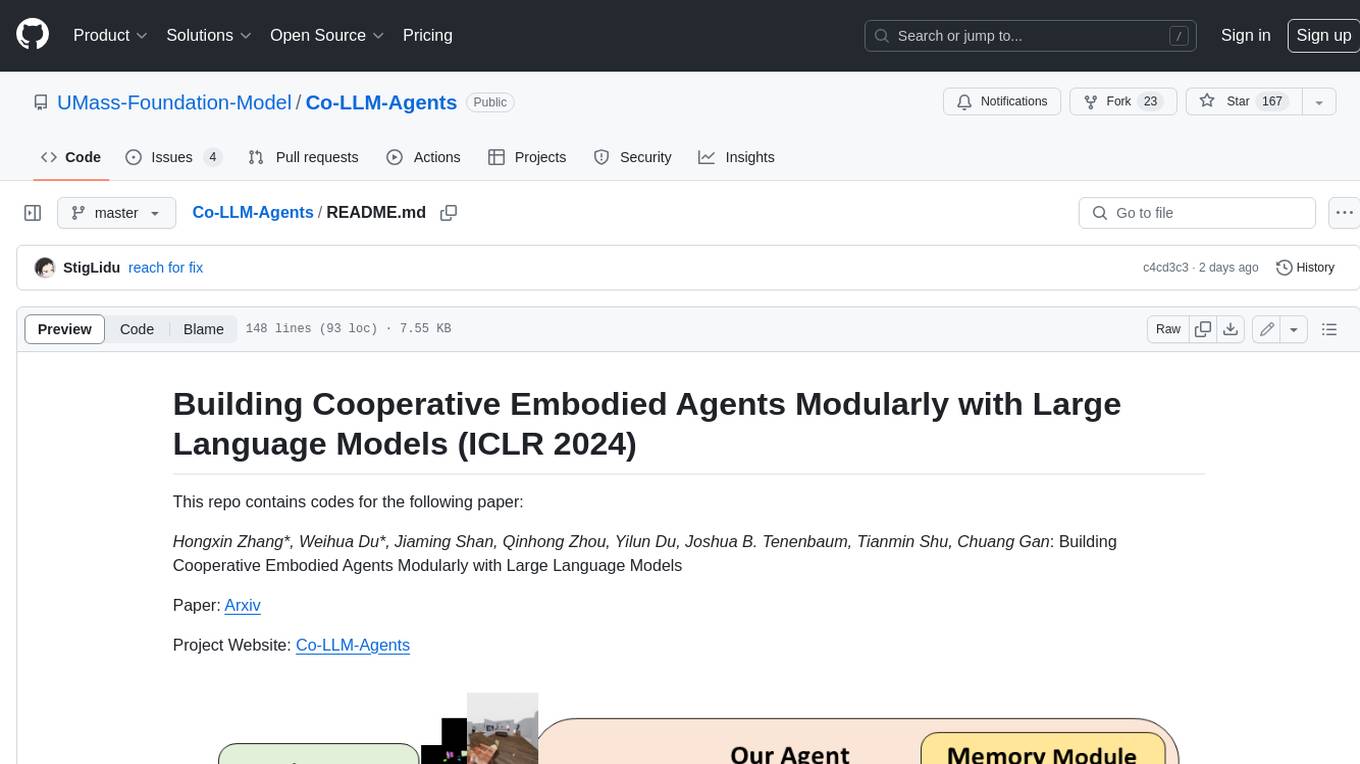
Co-LLM-Agents
This repository contains code for building cooperative embodied agents modularly with large language models. The agents are trained to perform tasks in two different environments: ThreeDWorld Multi-Agent Transport (TDW-MAT) and Communicative Watch-And-Help (C-WAH). TDW-MAT is a multi-agent environment where agents must transport objects to a goal position using containers. C-WAH is an extension of the Watch-And-Help challenge, which enables agents to send messages to each other. The code in this repository can be used to train agents to perform tasks in both of these environments.



